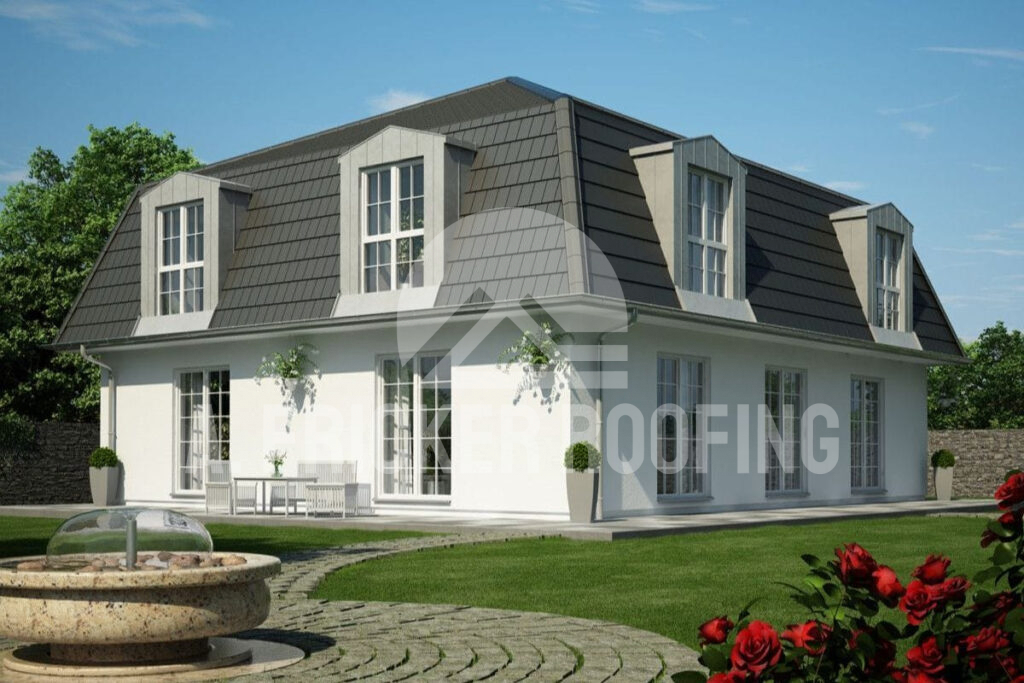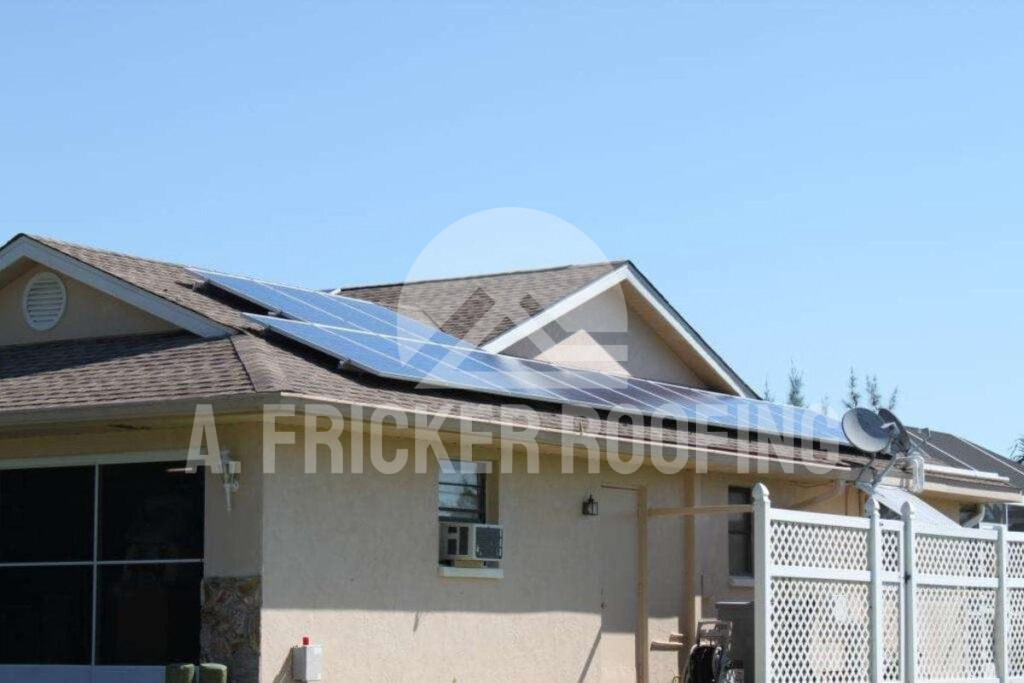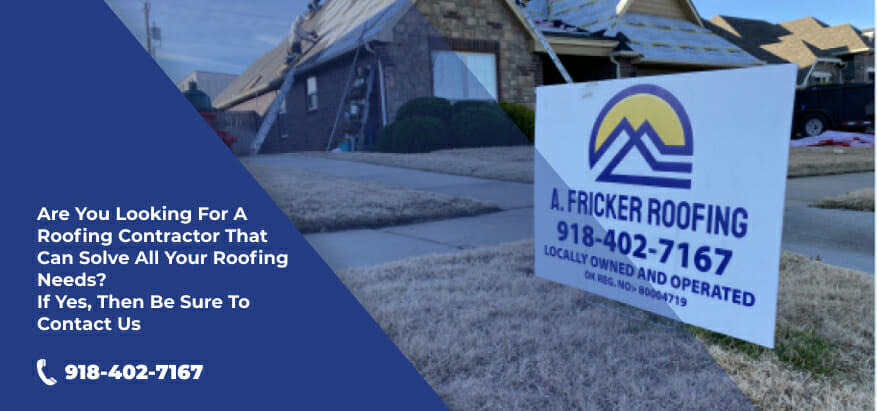Do you want to install a new roof on your home or commercial building? If yes, then it’s time to start your research. Installing a new roof on your property requires you to make an informed decision that will impact your home for years to come.
In order to help you decide what is best for your property, this blog post presents lists of the most popular roof types and materials. Before getting into the different types of roofs you can install, let’s first start with some basics.
What We Refer To As Roof Types/Design
Roof design, or roof type, refers to the architectural and structural planning of a building’s roof. The design of a roof is necessary because it not only plays a significant role in protecting the structure and its occupants from the elements, but it also contributes to the overall aesthetic and functionality of the building. The roof design can vary based on your preference, the climate in your area, and the purpose of the building, whether it’s residential or commercial.
The Most Popular Types of Roofs: Pros & Cons
1. Gable Roof

The gable roof is one of the most common and recognizable roof types. It consists of two slopes that meet at the top to form a peak. This design allows for efficient water runoff and ample attic space. Gable roofs are not only practical but also aesthetically pleasing, making them a popular choice for many homeowners.
| Pros | Cons |
| Efficient drainage | Vulnerable to high winds |
| Good ventilation | Limited attic space |
| Easy to build and maintain | May require reinforcement in areas with heavy snow |
2. Hip Roof

The hip roof is another classic design of roofs. It consists of slopes on all four sides that meet at the top. This style is known for its stability, durability, and resistance to strong winds. Also, it is a great option for areas prone to severe weather conditions. Hip roofs can provide extra living space with the addition of dormers or rooms in the attic.
| Pros | Cons |
| Excellent wind and snow resistance | More complex to build |
| Balanced drainage | Reduced attic space |
| Provides shade around the building | May require extra ventilation |
Also read Your Comparative Guide To Hip Vs. Gable Roofs
3. Mansard Roof

The mansard roof, also known as the French roof, is characterized by its distinctive double slope on all four sides. This design offers plenty of space under the roof, making it ideal for expanding your living area. It’s a timeless and elegant choice for historical or French inspired homes.
| Pros | Cons |
| Maximize living space | Expensive construction |
| Increased aesthetic appeal | Requires regular maintenance |
| Ideal for urban environments | No as suitable for regions with heavy snow |
4. Flat Roof

Flat roofs, as the name suggests, have a minimal slope and are commonly used for modern and minimalist architecture. Flat roofs are generally used on commercial buildings. They are versatile and can be used for creating rooftop gardens or outdoor living spaces. However, you may need to add more drainage to prevent water from pooling.
| Pros | Cons |
| Easy to maintain and inspect | Prone to leaks if not properly drained |
| Excellent for solar panels | Limited insulation, poor energy efficiency |
| Cost effective construction | Frequent maintenance required |
6. Dutch Gable Roof

Combining elements of the gable and hip roof, the Dutch gable roof presents a gable style design with a small hip at the top. It offers aesthetic appeal and extra attic space, making it an attractive choice for various architectural styles. While this roof type is expensive to build, it offers a durable and rustic appeal to homes.
| Pros | Cons |
| Unique aesthetic appeal | Hard to construct |
| Improved ventilation | Higher installation cost |
| Suitable for snow-prone areas | May require regular maintenance |
7. Gambrel Roof

Gambrel roofs have two distinct slopes on each side and are commonly found on barns. This roof design comes with a lower slope that is steeper than the upper one. Moreover, this unique roofing style provides ample space and is often used for rustic or countryside homes.
| Pros | Cons |
| Eye catching design | Vulnerable to strong winds |
| Maximizes attic space | Maintenance required for leak prevention |
| Efficient rainwater runoff | Limited space for insulation |
8. Butterfly Roof

The butterfly roof is a unique and eye catching design where the roof slopes inward, opposite to that of gable roofs. This creates a V shape that resembles the wings of a butterfly. Butterfly roofs are a popular choice for contemporary and eco-friendly homes, as they allow for rainwater harvesting.
| Pros | Cons |
| Modern and artistic design | Complex construction |
| Excellent for natural light | Higher costs |
| Suitable for rainwater collection | Limited attic space |
9. Saltbox Roof

The saltbox roof is an intriguing and distinctive roof design known for its asymmetrical design. It is similar to a gable roof but one of its slopes is extended. Saltbox roofs feature a long, sloping roof with one short and one long side. This roofing design adds a unique character to your home and is often used in Colonial, and Cape Cod style houses.
| Pros | Cons |
| Unique architectural appeal | Complex construction |
| Efficient drainage | Challenging to insulate |
| Ideal for two story homes | Requires experienced builders |
10. Curved Roof

Curved roofs are a modern and contemporary roofing style that stands out. They have a gentle, curved shape that adds a sense of sophistication to the buildings they are installed on. These roof types are often used in minimalist architectural designs. Moreover, curved roofs are extremely water resistant and, due to their round shape, shed water easily.
| Pros | Cons |
| Excellent aesthetic appeal | Higher costs |
| Allows for plenty of natural light | Hard to construct |
| Ideal for rainwater harvesting | Requires unique roofing materials |
11. Saw-Tooth Roof

The saw-tooth roof is a unique and industrial style design. It is a series of ridges with vertical glass panels, allowing natural light to flood the interior spaces. This roof type is popular in factories, warehouses, and modern commercial buildings.
| Pros | Cons |
| Distinct architectural aesthetics | Limited roofing material options |
| Abundant natural light | Maintenance challenges |
| Recommended for industrial and commercial spaces | Not ideal for residential use |
12. Green Roofs
With increasing environmental awareness, green roofs are becoming a popular choice. These roofs are covered with vegetation, providing natural insulation and helping to reduce energy consumption. Green roofs are not only eco-friendly but also aesthetically pleasing, as you can add your choice of flowers or shrubbery. They are an excellent choice for sustainable and energy efficient homes.
| Pros | Cons |
| Eco-friendly | High installation cost |
| Natural insulation | Complex installation process |
| Energy efficient | Continues maintenance |
Most Popular Roofing Material Options
Along with choosing the right roof design, you will need to select the right roofing material for your home or commercial building. Based on your preference, the climate in your area, and the roof type, you can select the right roofing material for your project.
1. Asphalt Shingles – The Classic Choice
Asphalt shingles have long been the most popular roofing material in the U.S. They are widely recognized for their affordability, durability, and ease of installation. Asphalt shingles are available in a variety of colors and styles, making them a versatile option for any home or commercial building. Whether you have a traditional or contemporary house, asphalt shingles can be a great fit.
2. Metal Roofs – Durability and Longevity
If you’re looking for a roof that will stand the test of time, metal roofs are an excellent choice. These roofs are highly durable, often lasting for 50 years or more. They are resistant to extreme weather conditions and UV rays, making them a great option for areas prone to hurricanes or heavy snowfall.
Additionally, metal roofs are eco-friendly, sustainable, and energy efficient, which can save you money in the long run. While metal roofs are more expensive up front, they are worth the investment for their durability and long lifespan.
3. Wood Shakes – Rustic Charm
For a more rustic and natural appearance, wood shakes are an appealing option. As the name suggests, they are made of wood, including cedar, redwood, or pine, and their textured, rough look adds charm to any home. Wood shakes are especially popular in rural and cottage style residences. However, it’s important to note that they require more maintenance compared to other materials.
4. Clay and Concrete Tiles – Timeless Elegance
Clay and concrete tiles have been used for centuries and are known for their timeless elegance and longevity. They come in various shapes and colors, allowing for a customized and artistic look for your residential or commercial roofs. Clay and concrete tiles are ideal for Mediterranean and Spanish style homes, as they perfectly complement these types of architecture.
5. Slate Roofs – Unmatched Beauty
Slate roofs are known for their unmatched beauty and longevity. Made from natural stone, slate roofs can last over a century. Their unique, textured appearance adds a touch of luxury and elegance to any home. While slate roofs are relatively expensive compared to many roofing materials, their durability and aesthetics make them a worthwhile investment for historical, or high end homes. If you’re considering installing a slate roof, consider these three slate roof shingle brands.
6. Flat Roofing Materials – Modern and Minimalistic
Though flat roofs are a popular option for commercial buildings, they are now gaining popularity for residential buildings. They are popular for the modern design they provide, due to their sleek and minimalistic appearance. They can be seen on contemporary and mid-century modern homes. A flat roof can be covered with a variety of roofing materials, including EPDM and TPO membranes, modified bitumen, and metal.
Factors to Consider When Choosing The Right Roof Design and Materials For Your Property
Choosing the right roof type and materials requires property owners to do a lot of research and analysis. Consider the following factors before making a final decision:
1. Budget:
Determine your budget for your next roofing project. Different materials come with varying price points, so consider how much you’re willing to spend before finalizing a decision.
2. Climate:
Climate and weather patterns play a significant role when making a decision on the type of roof and the materials to install. Some materials are better suited for areas with heavy rainfall, while others are more suitable for hot, sunny climates.
3. Building Type:
The type of building you have should influence your choice of roofing system. Residential buildings may have different requirements than commercial or industrial structures.
4. Aesthetics:
Consider the architectural style of your building and your personal preferences. Your roof should complement the overall look of your property.
Contact A. Fricker Roofing and Waterproofing In Tulsa, OK, For Your Roof Installation.
If you are considering installing a new roof on your home or commercial building, contact the skilled and professional roofers at A. Fricker Roofing and Waterproofing in Tulsa, OK. Our team has years of experience in the roofing industry and can help make your dream home a reality.
Call us today at (918) 402-7167.

